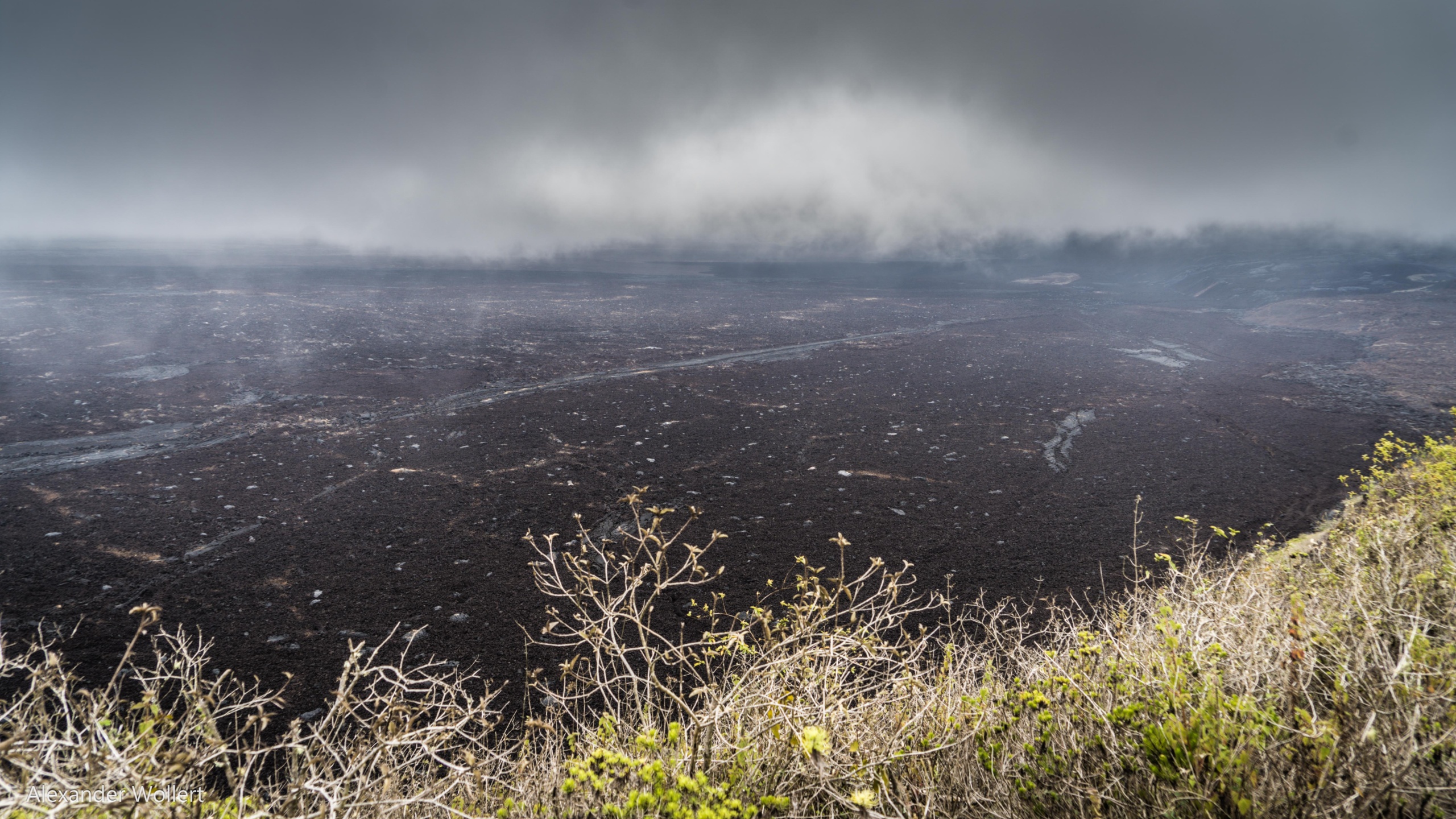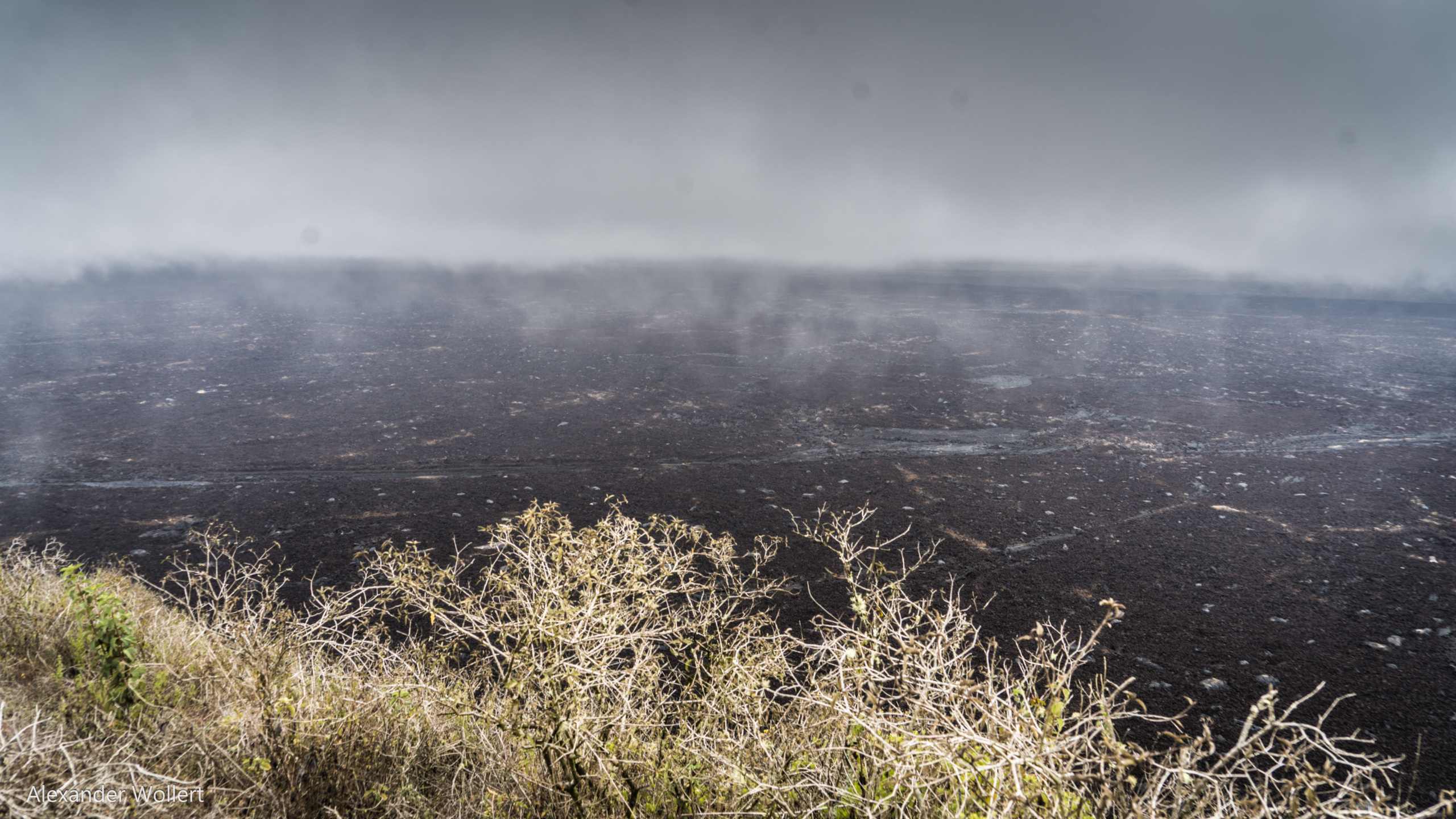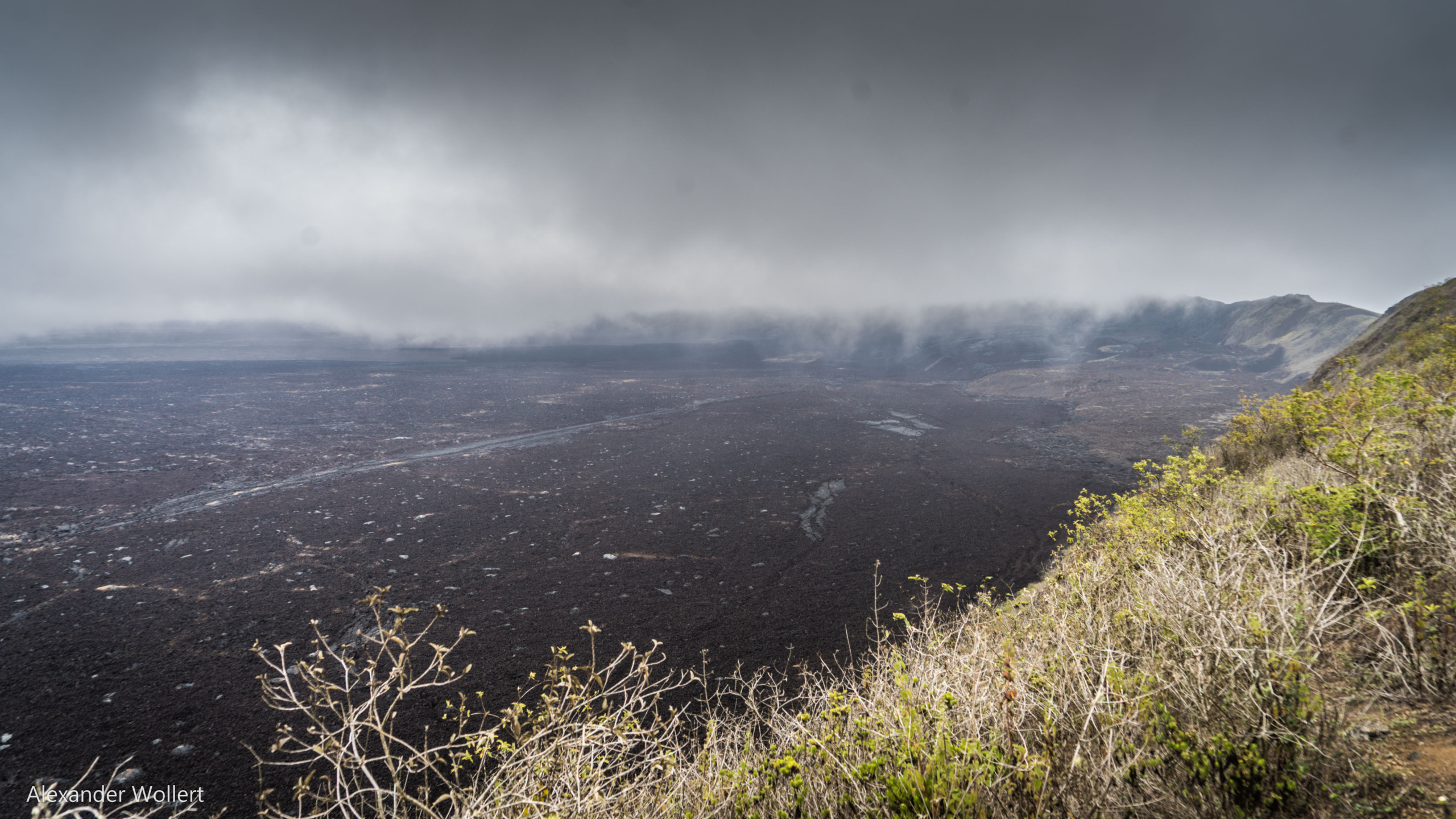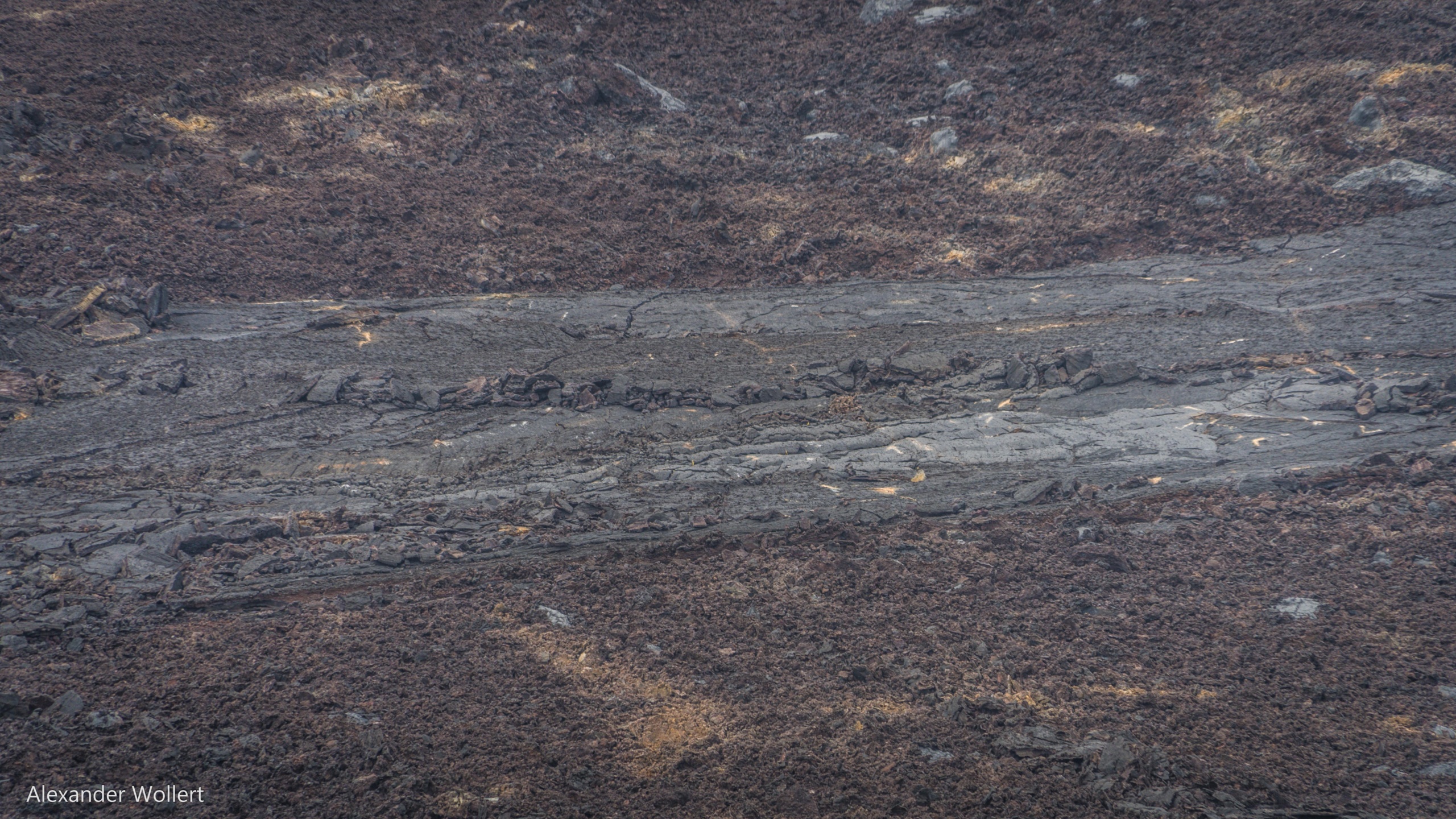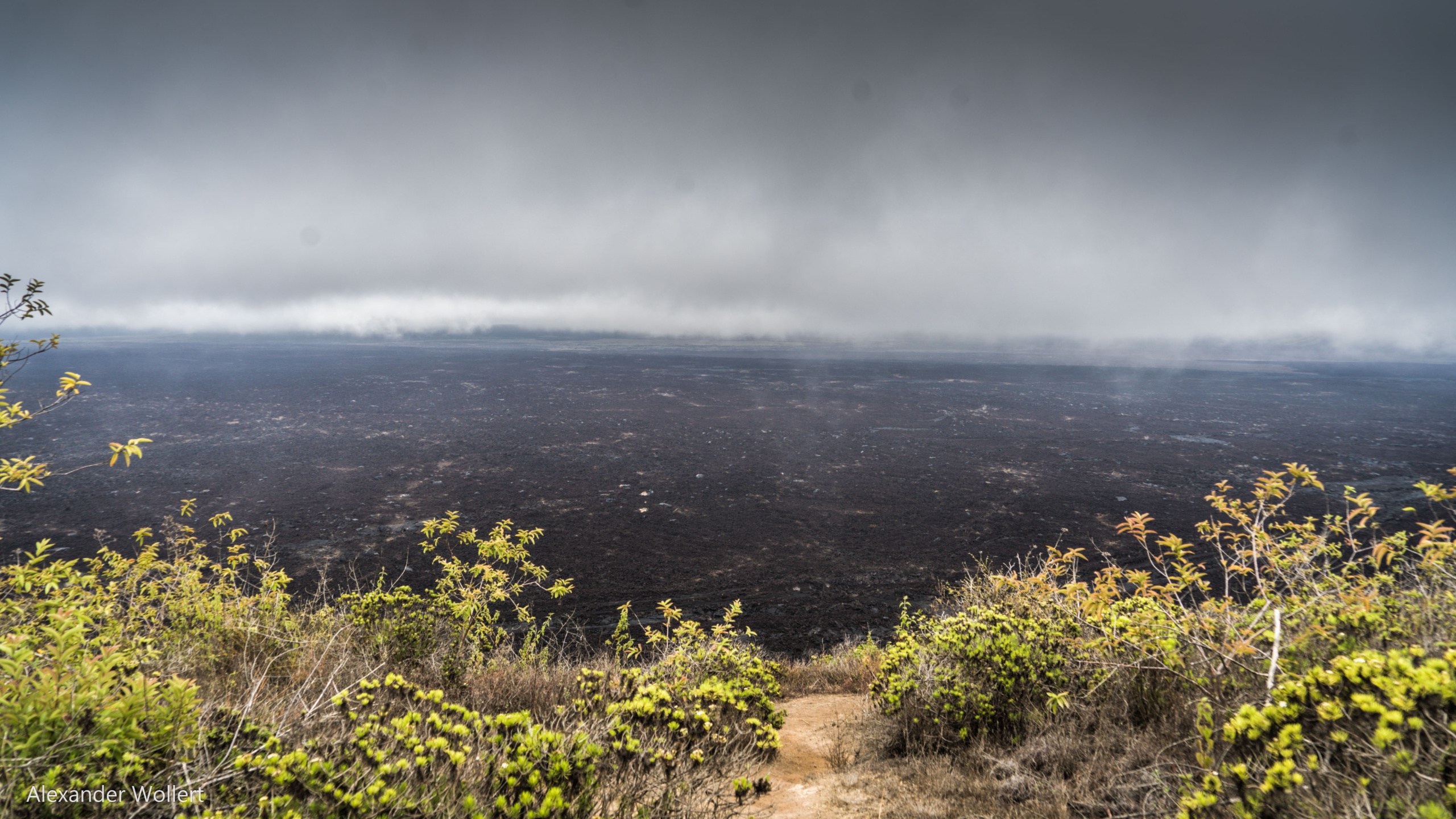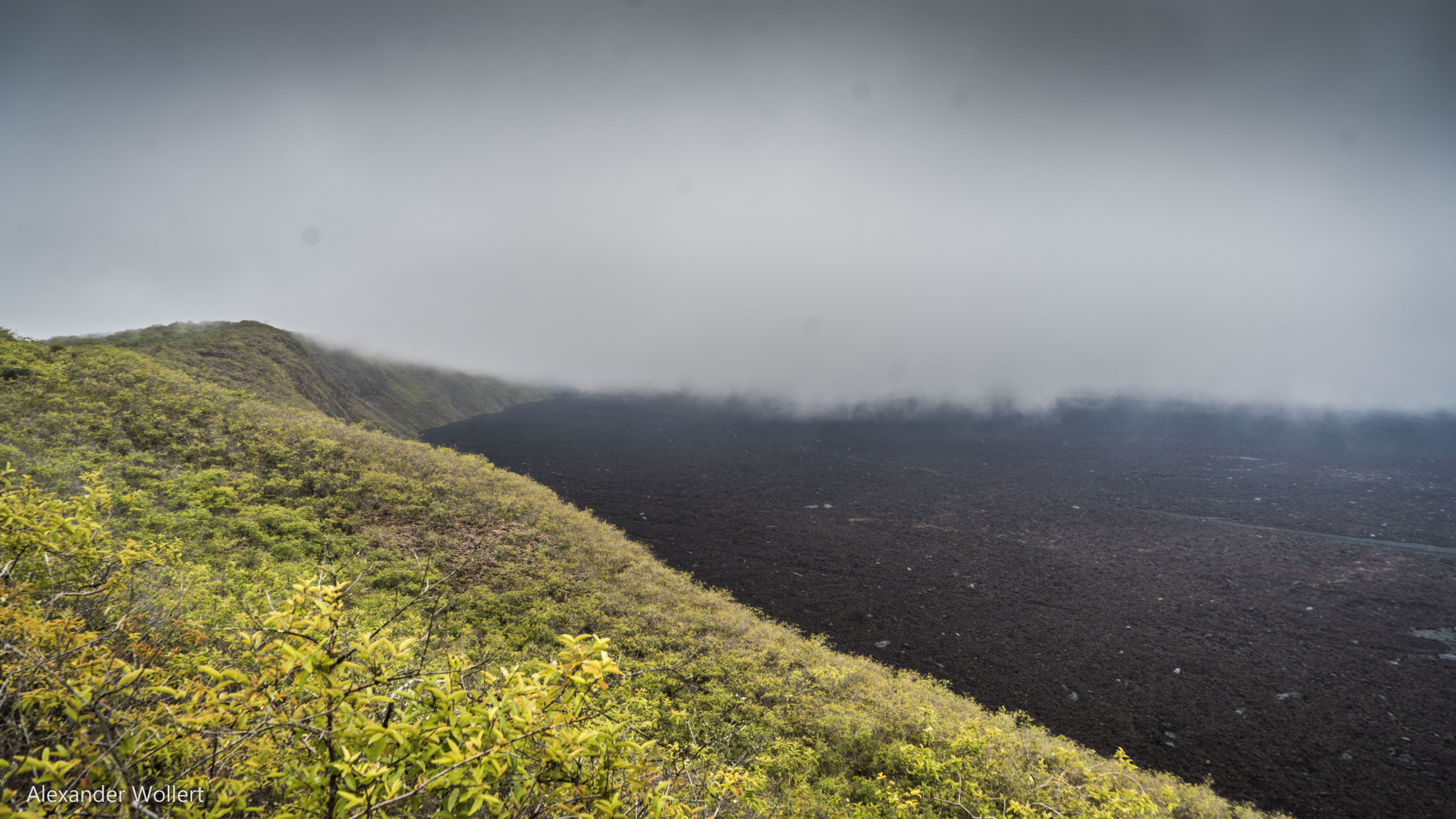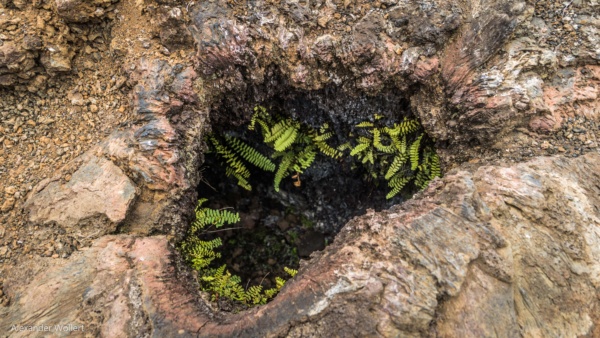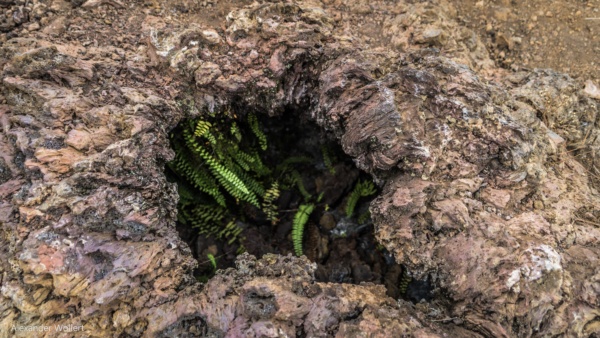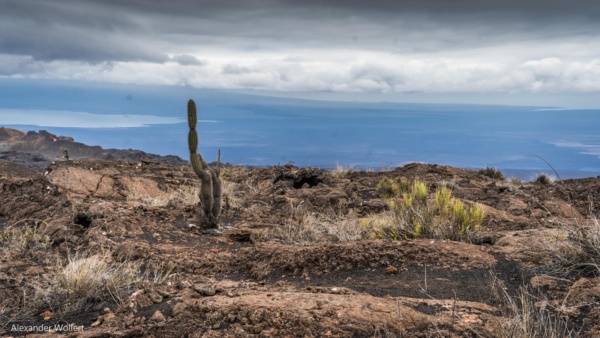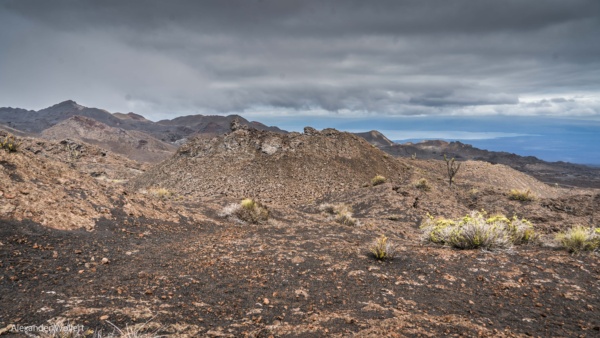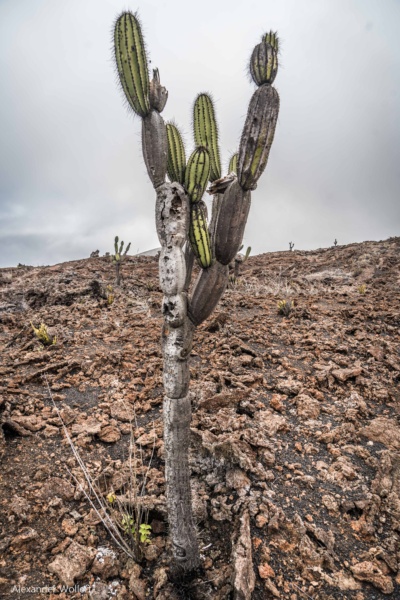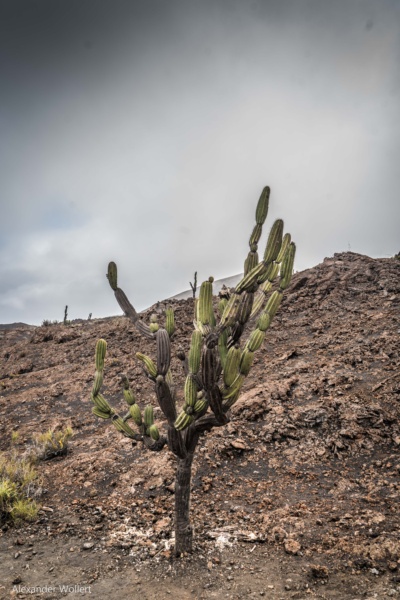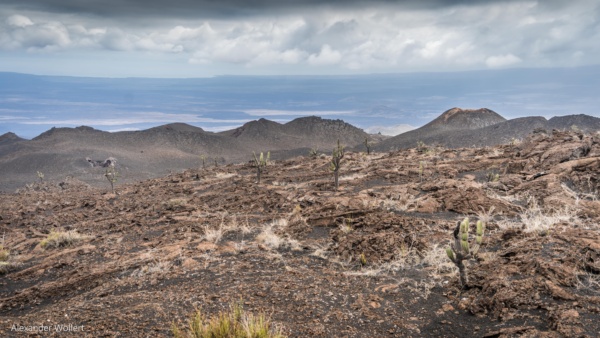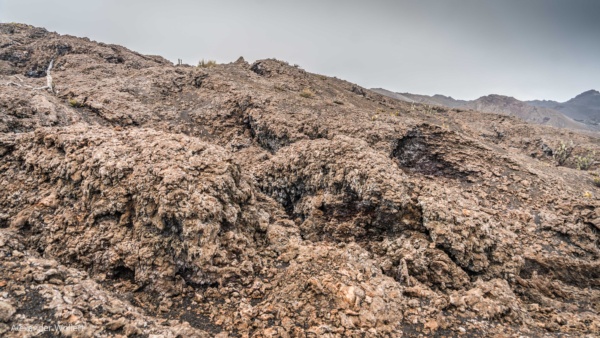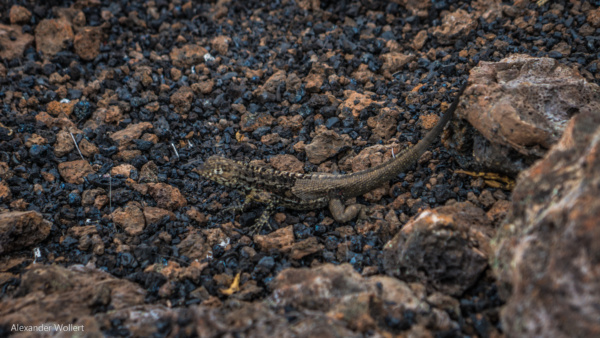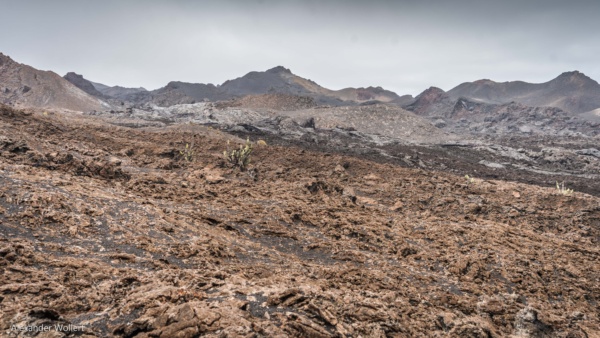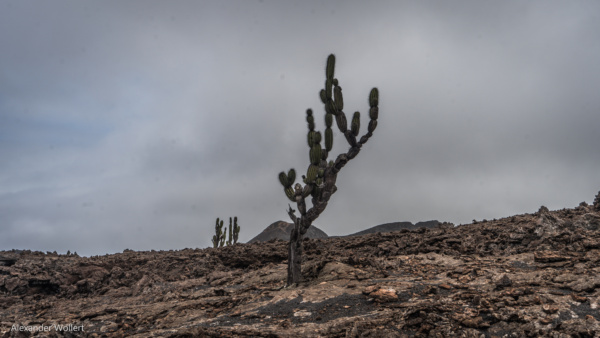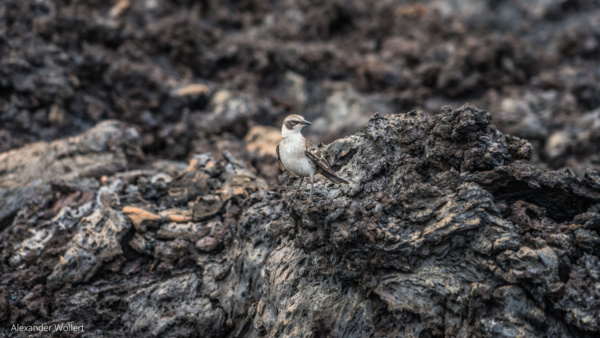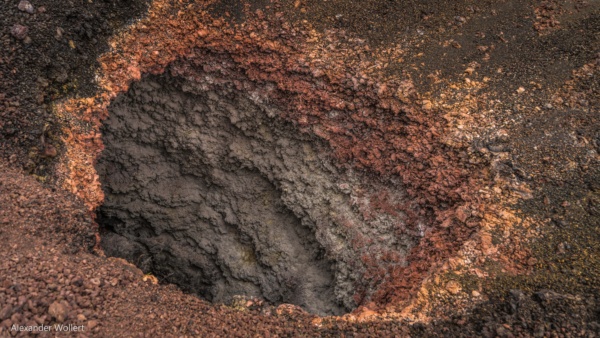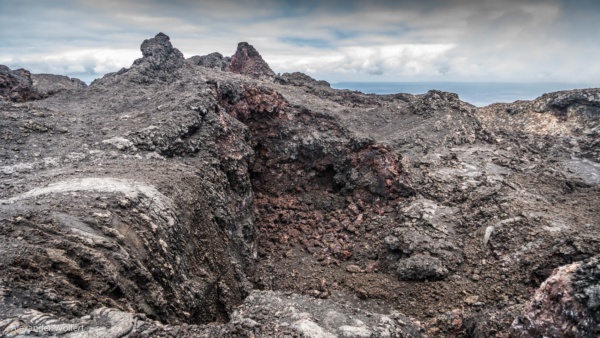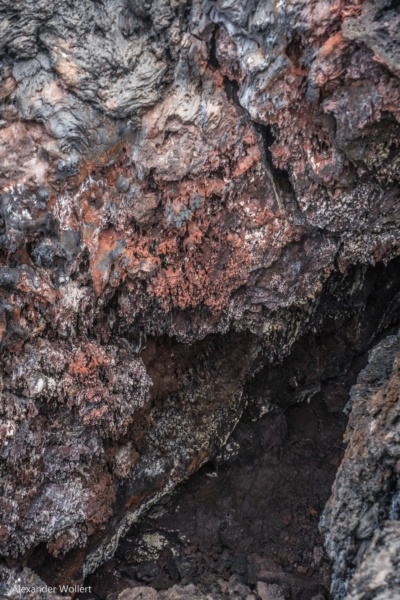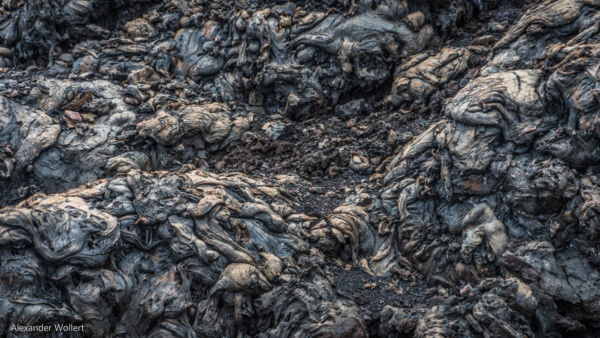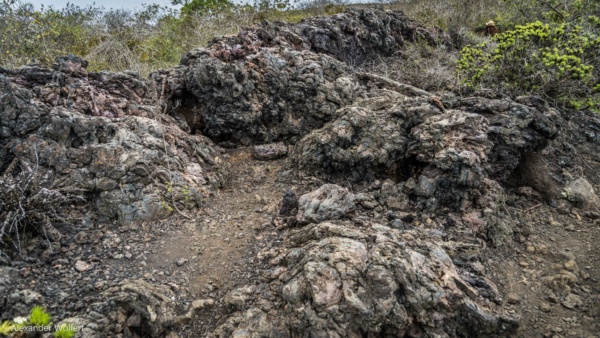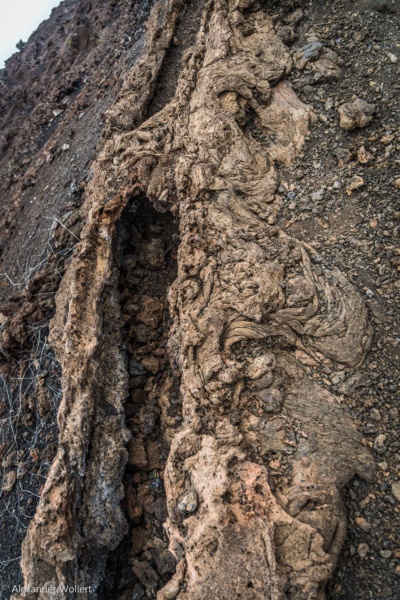Diary Entry
All of the Galapagos Islands are volcanoes that rose from the sea long ago and are still active. Two of the largest are on Isla Isabela, Cerro Azul and Sierra Negra, which also features the second largest crater in the world. I set off on a tour to the Sierra Negra while Sara sacrifices herself and stays at home in Puerto Villamil with Leon. I have a six-hour march ahead of me.
At 7 a.m. I am picked up from our accommodation. With a few different noses, we then drive inland by car. We first cross the dry landscape on the coast, where only bushes and cacti grow. But the higher we get, the greener it gets. I see huge tropical trees with lianas hanging from them. Trumpet flowers, papaya trees and banana trees give a picture of the tropical jungle.
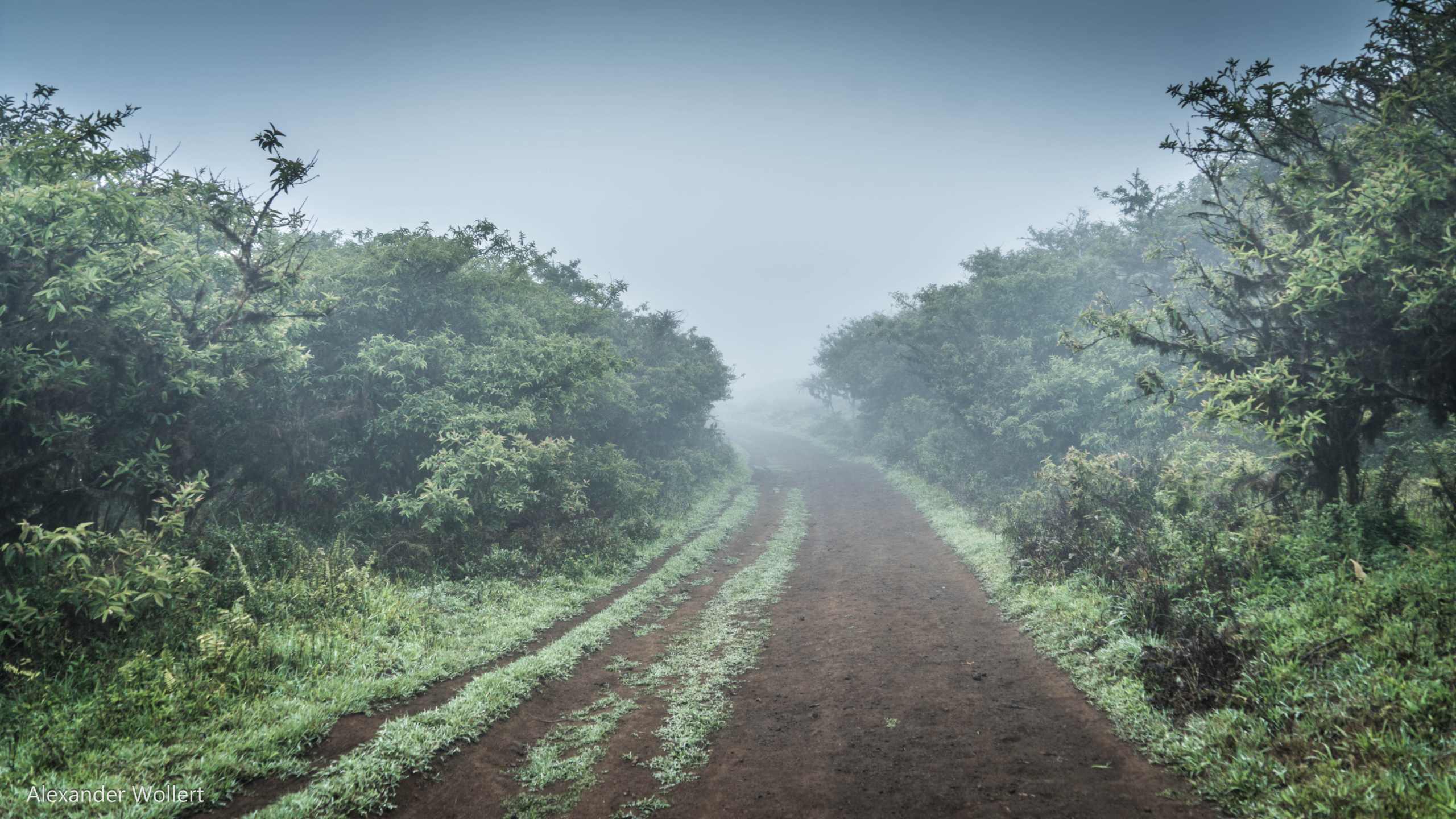

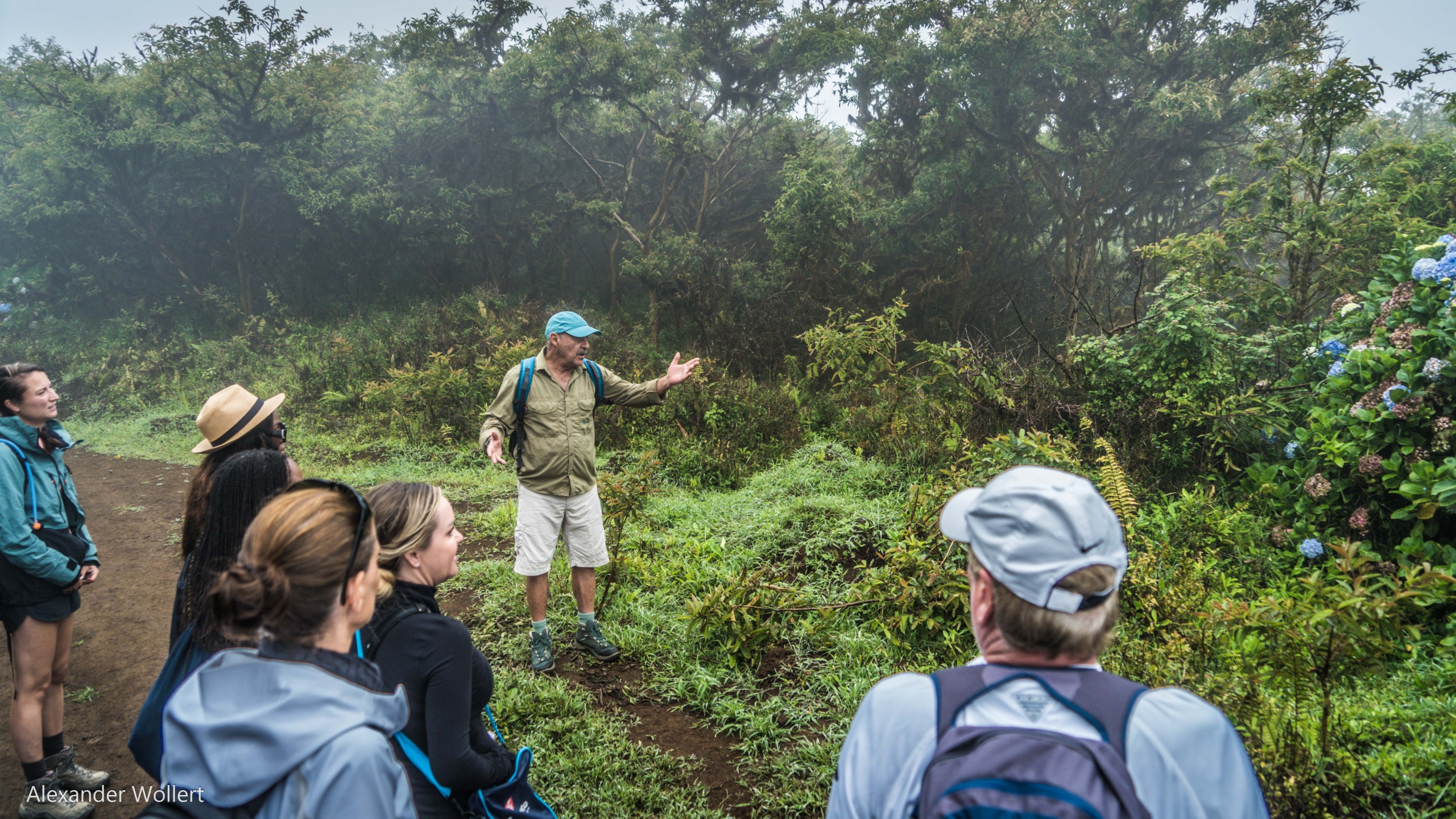
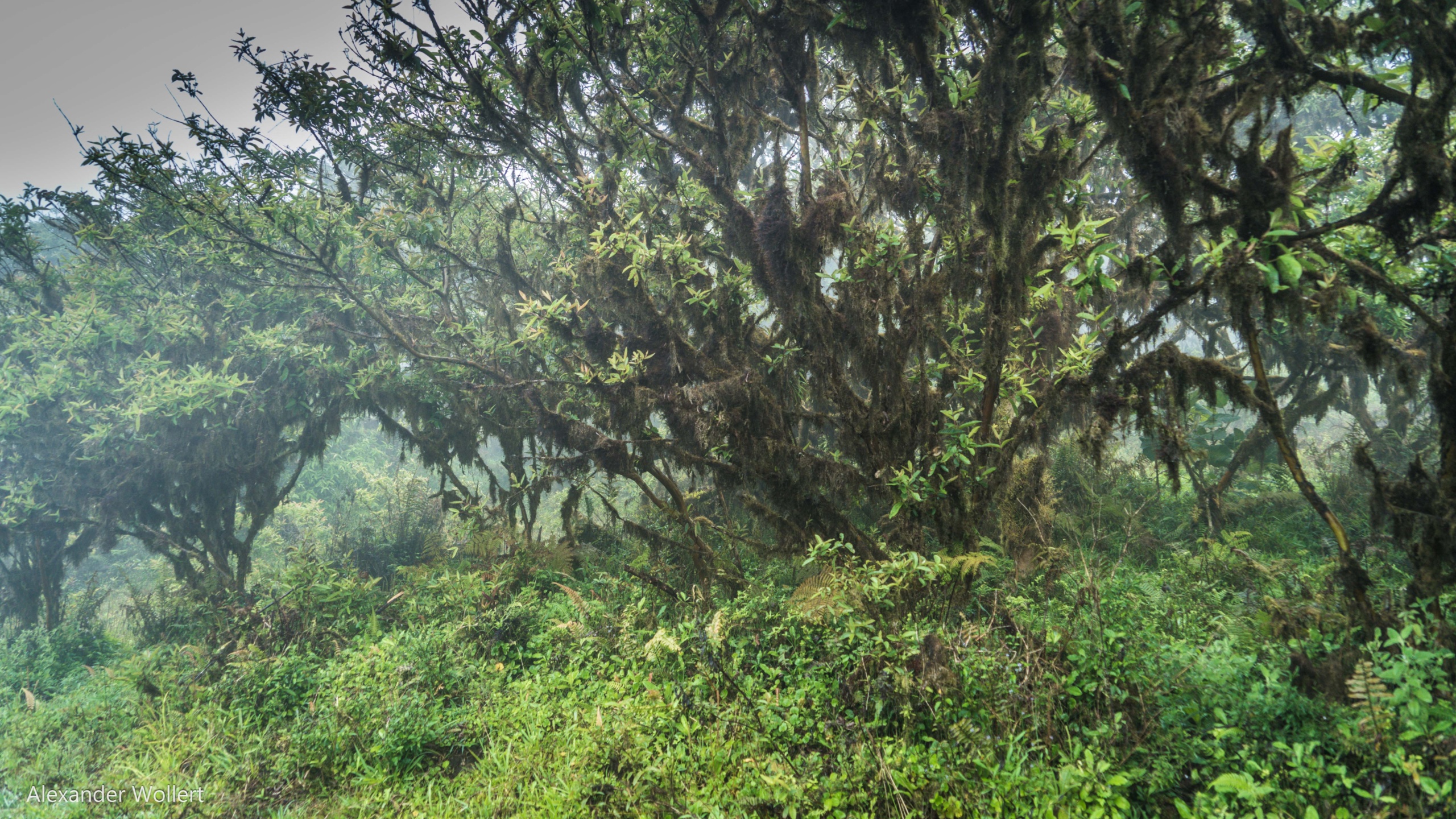
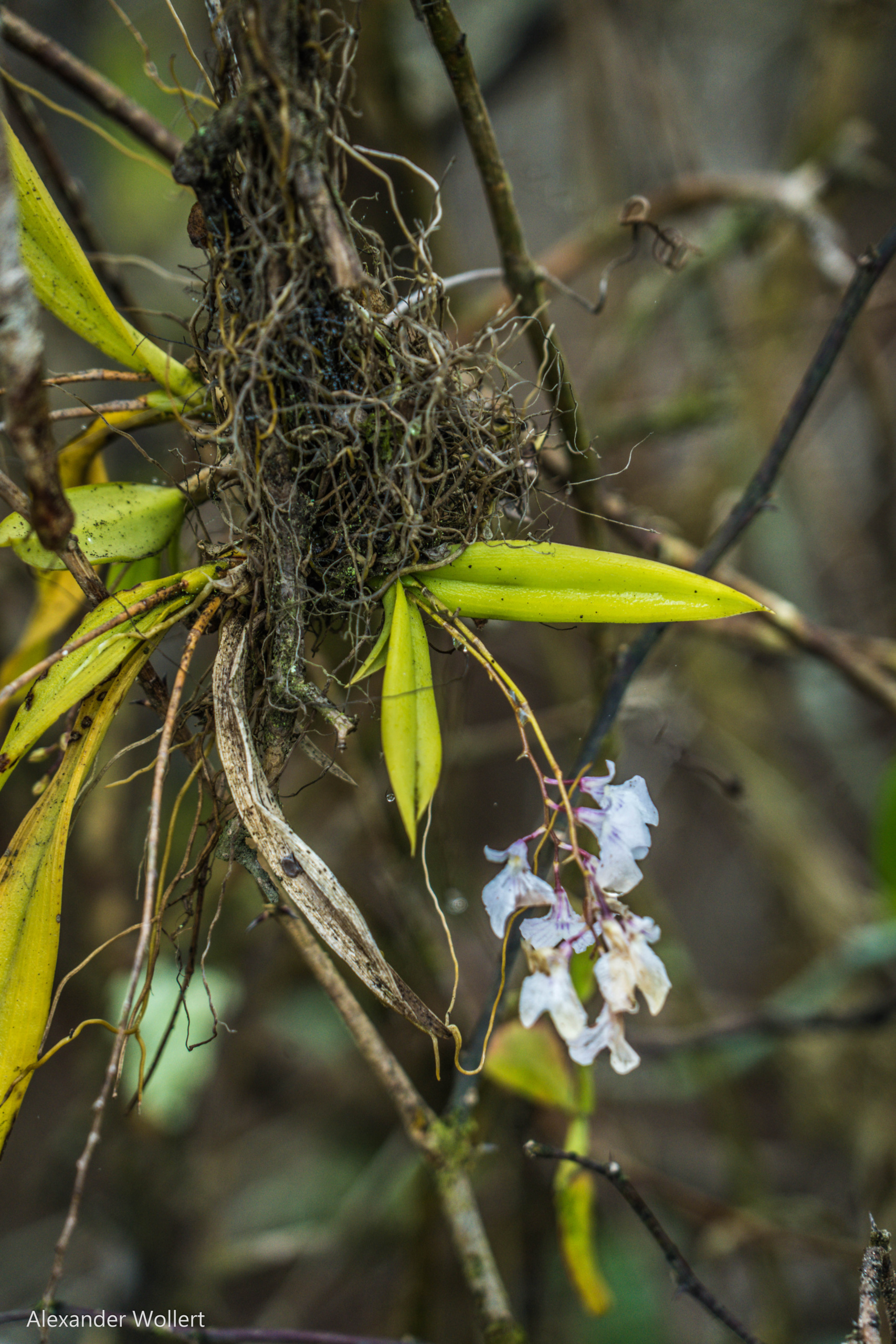

It goes further up and the vegetation changes as well. Ferns and lichen-covered trees hang close together in the fog. We reach our starting point.
With the guide Alfredo, a grumpy old man from Guayaquil, we start on foot. We don’t see much except fog. Alfredo shows us wild orchids, mistletoe and guyaba trees as well as native songbirds that only exist on Isla Isabela.
Then we reach the crater rim. The second largest crater in the world – for the largest you have to go to Ngorogoro Crater in Tanzania – with a diameter of 10 kilometers and a circumference of 40 kilometers, and we see – nothing. Nothing at all. A large cloud hangs so low that we can just put our hands in front of our eyes and see the path ahead.
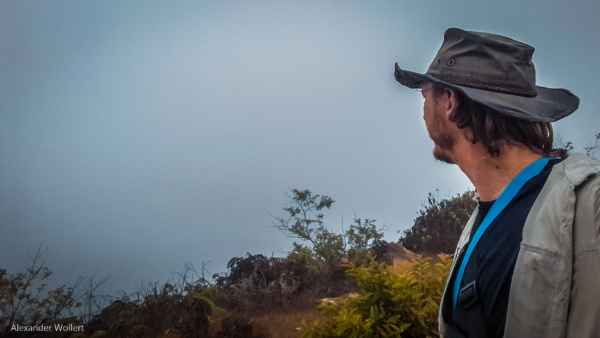

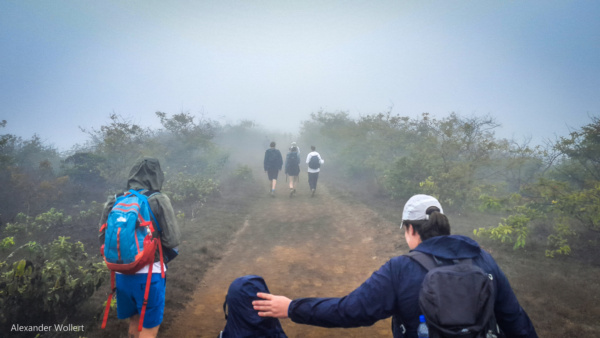
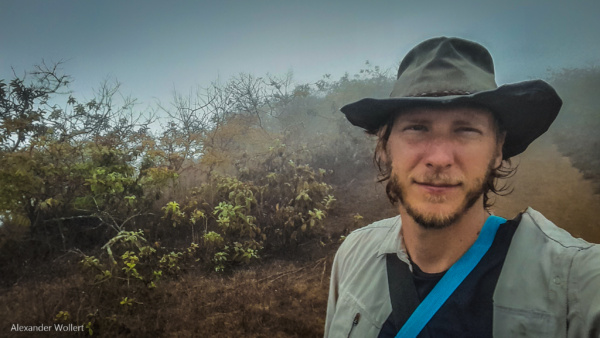

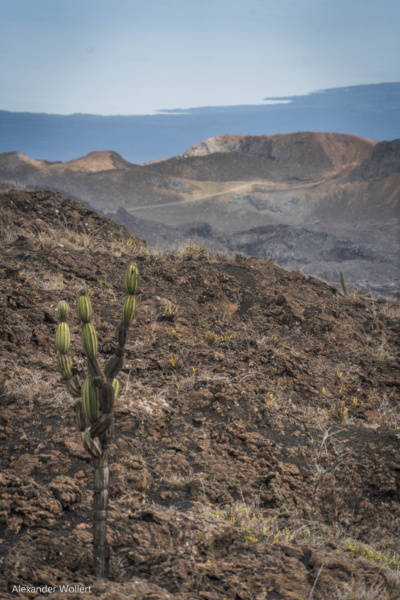


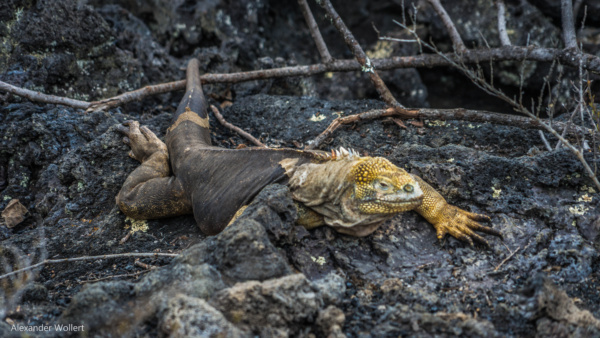


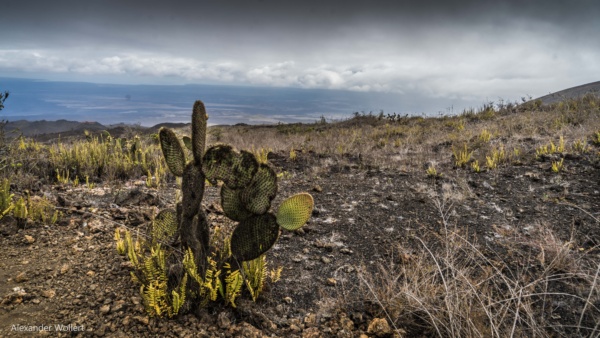
Well, we continue through the white nothingness along an invisible crater wall that is a hundred meters deep. Alfredo tells us that there was a big eruption here in 2005 that destroyed everything around the cat. But now everything is filled with plants. The volcano erupted again in 2018, but only a little lava flowed out, but it did not leave the crater.
Then the path makes a turn and leads out of the bushes down the mountain. On this side of the mountain follows the desert of ash. It crunches like walking on charcoal, which is what the stones look and feel like. Stones are very light because they are full of air bubbles. The landscape is full of colour: red, brown and yellow tones in all facets.
Visibility is now a little better and we can even see a few hundred meters away. In the dry season the view must be fantastic.
The sea can be made out in the distance and even the shape of Isla Isabela itself can be discerned.
Directly in front of us we see channels and tunnels of lava. Alfredo even alerts us to lava tsunamis. We can recognize them by the shapes where lava waves have broken on top of each other. This is paradise for every volcanologist.
Alfredo also shows us the cacti.
Well, these are cacti and the only thing that grows here. I think. But these candela cactus only grow 3 millimeters a year. And most of the specimens here are several meters tall. Some measure up to eight meters. These cacti are thousands of years old. They look so inconspicuous.
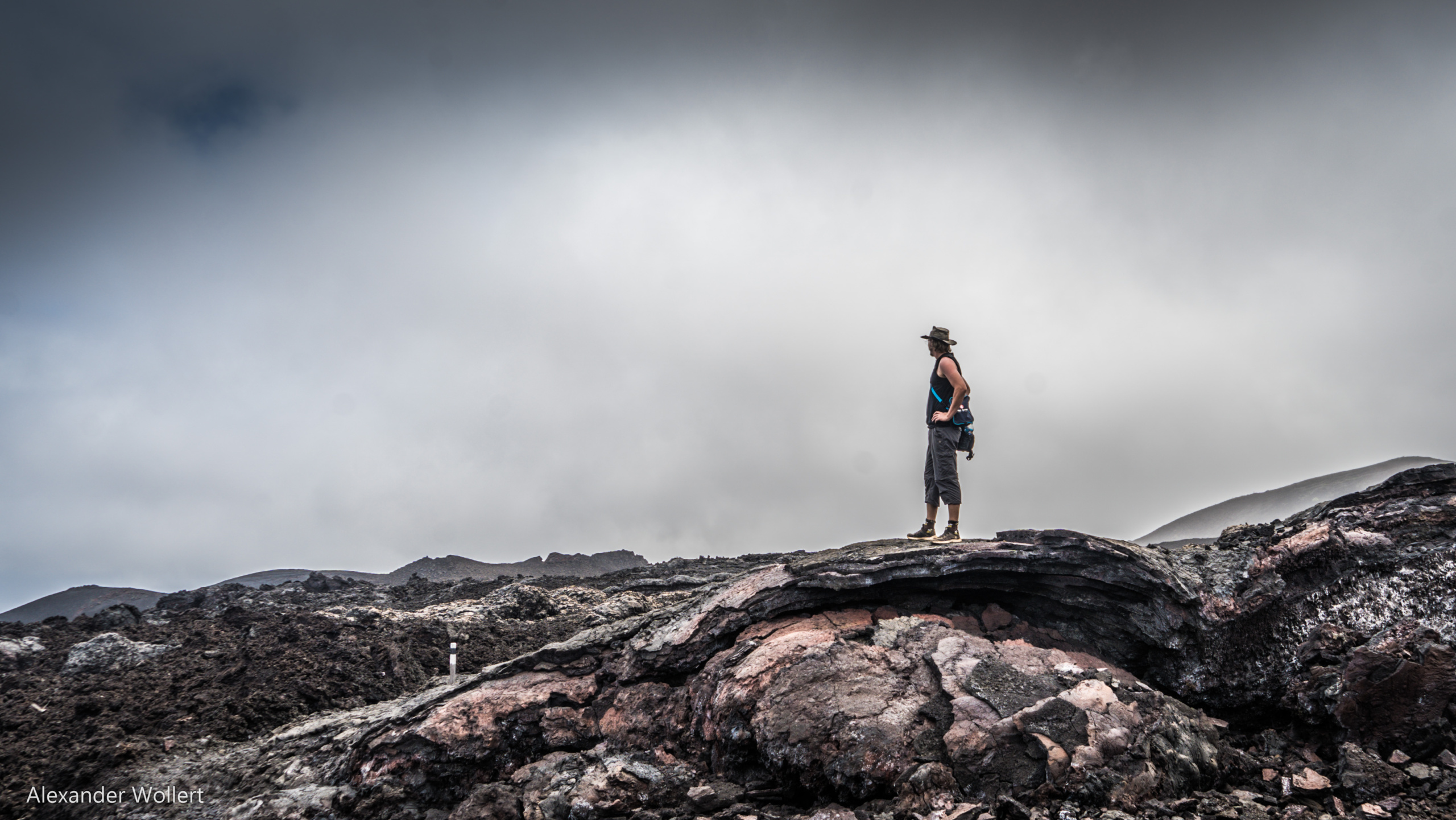
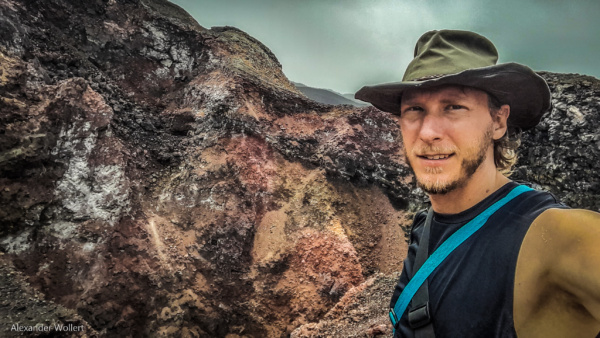
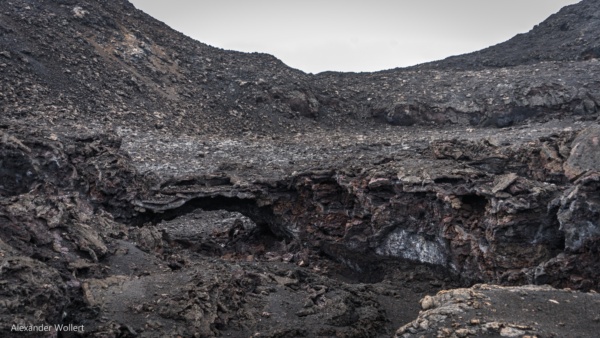
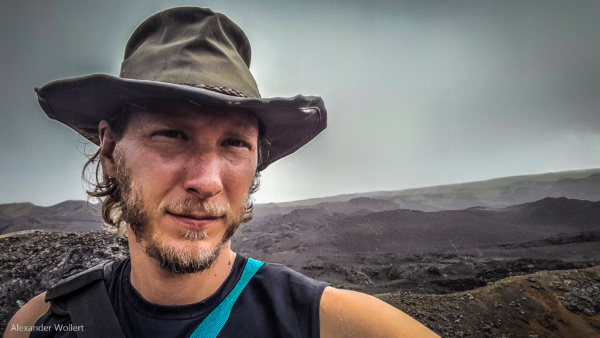
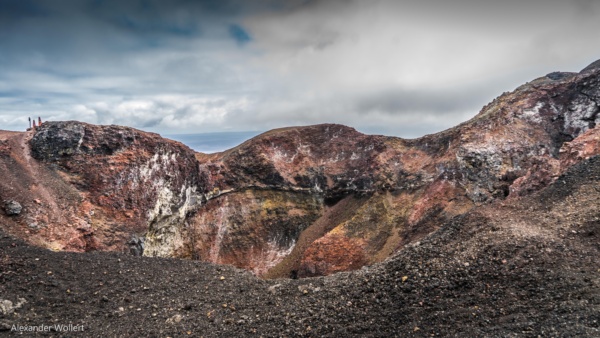
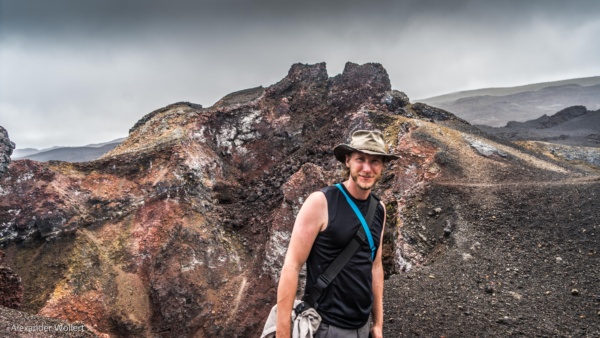
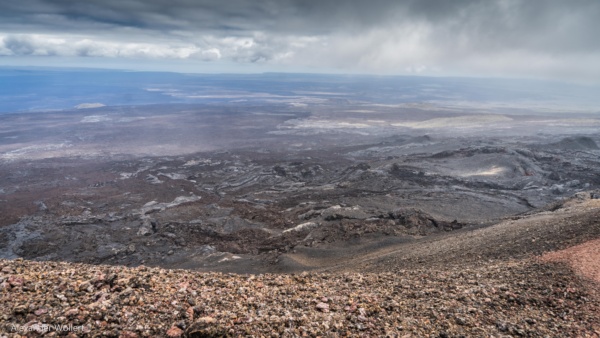
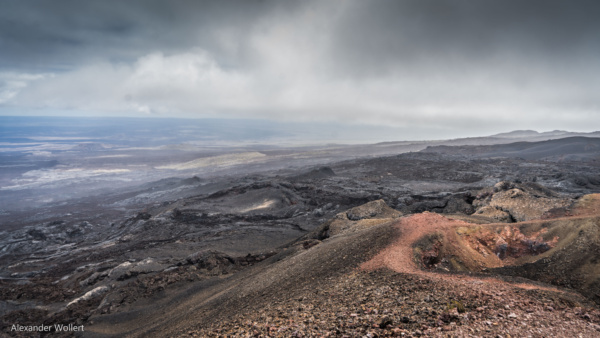


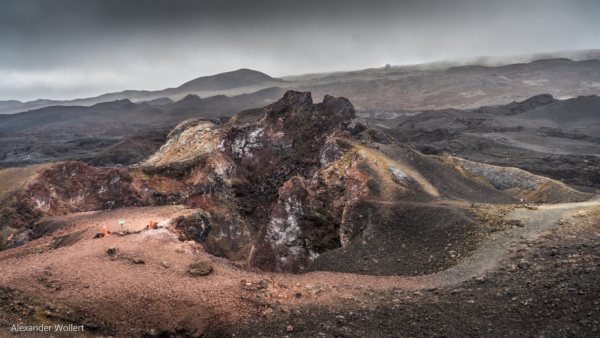
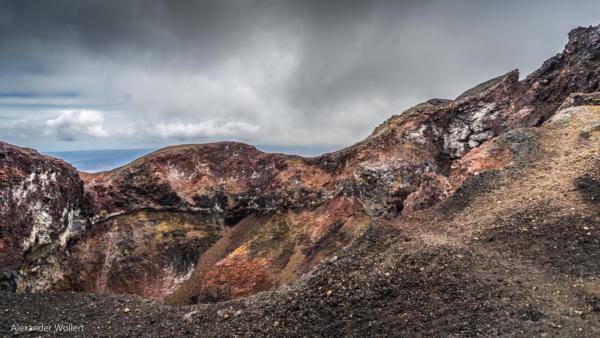
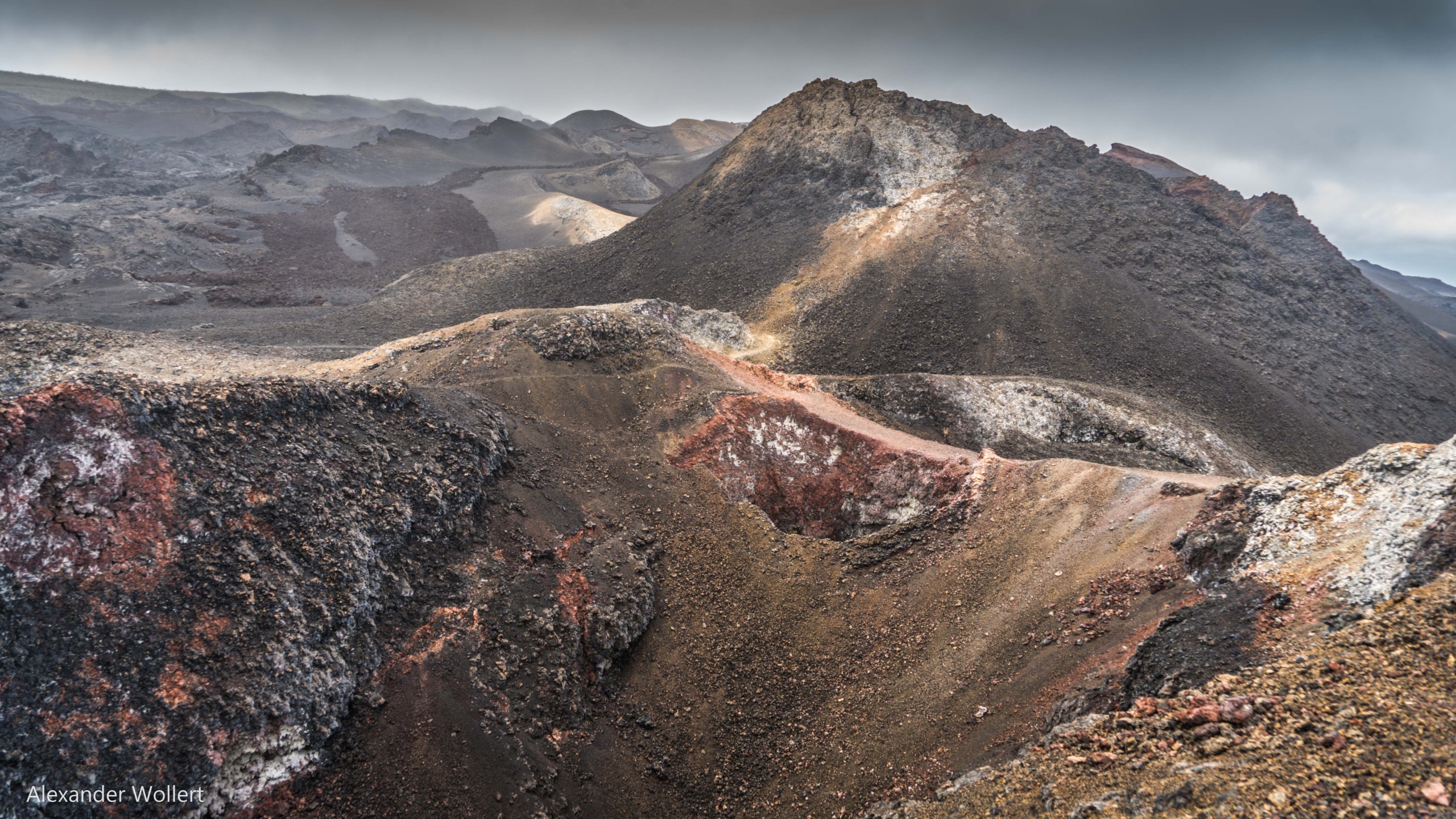
We also stumble upon a Ländle terrestrial iguana on the way. He looks very different from his colleagues on the beach. Its snout is pointed and its body is yellow. He’s not impressed by us.
We reach a couple of small, spectacular craters, then go back the same way.
This time we see a bit more of the great caldera and crater, although the cloud is still blocking most of the view. And then we are already back at the starting point and it goes back to Puerto Villamil. The next exploration goes to the tunnels.
